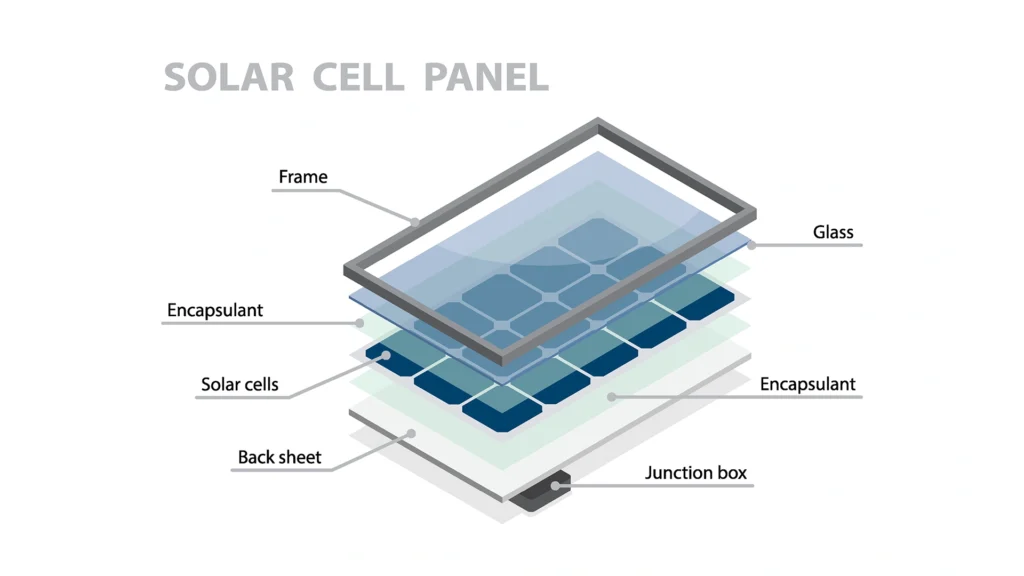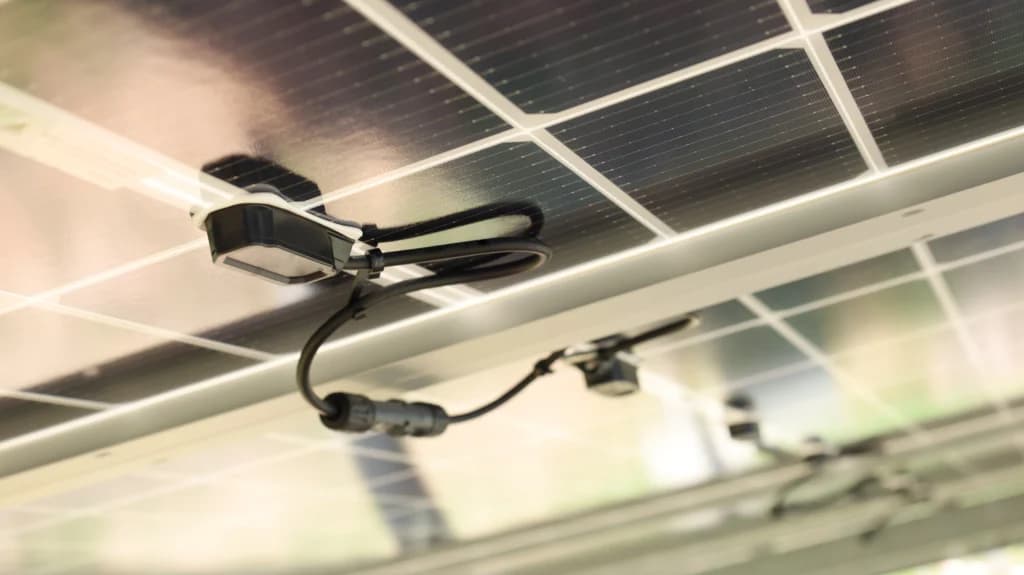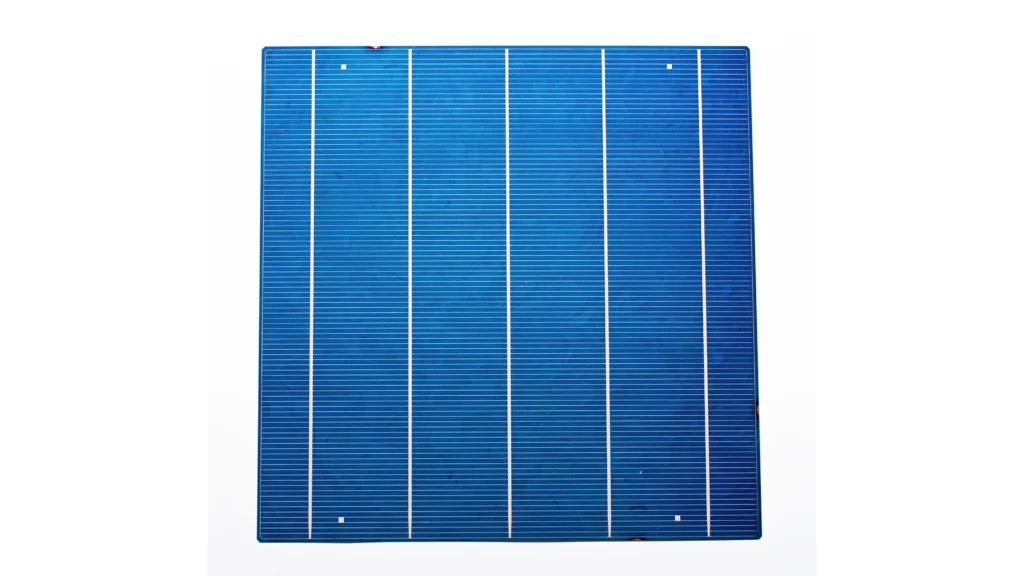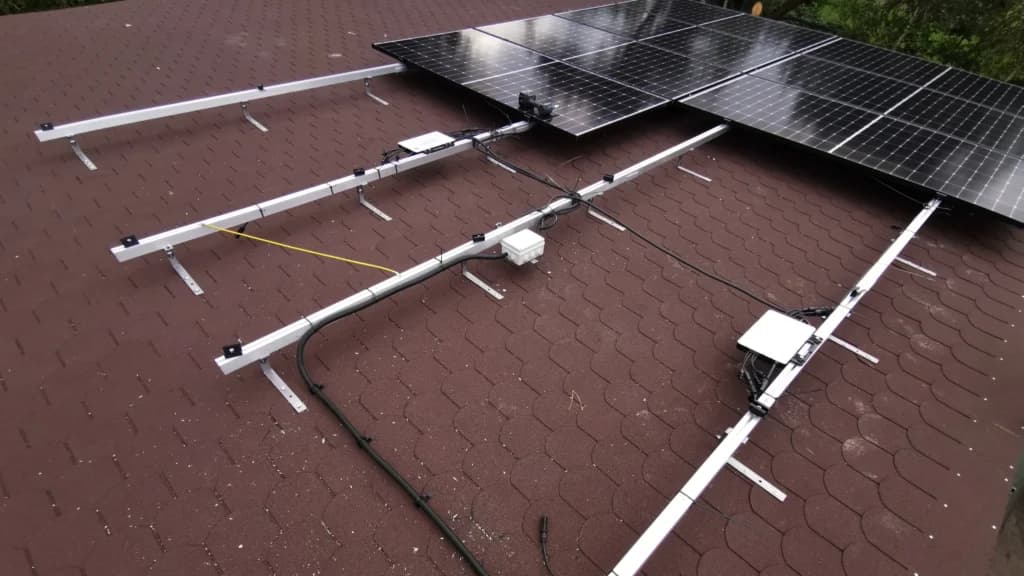
Understanding the common components of every solar panel
Over the last few years, Aurora Solar has observed a surge in popularity for renewable solar power. Interest in solar power has grown significantly in recent years. In Aurora Solar’s 2025 Solar Industry Snapshot, 76% of surveyed homeowners said they consider solar a good investment — up from just 43% in 2023.
If you’re considering making the switch, you might be wondering what’s inside a solar panel and how it helps power your home. While designs vary slightly by manufacturer, every panel relies on the same core parts working together.
At the heart are photovoltaic (PV) cells that convert sunlight into electricity, supported by protective and structural layers that ensure it’s delivered safely and reliably.
Most panels include solar cells, tempered glass, encapsulant, a backsheet, a metal frame, an inverter, and a junction box. In the sections ahead, we’ll walk through each part so you can better understand how solar panels work and why they’re built to last for decades.

In this article:
- Solar cells
- Glass
- Encapsulant
- Backsheet
- Metal frame
- Junction box
- Wiring and connectors
- Inverters
- Making sense of solar panels for your home
Solar cells
Also known as photovoltaic (PV) cells, solar cells are the heart of a solar panel. They’re made from semiconductor materials, typically silicon, that convert sunlight directly into electricity. When sunlight strikes a cell, it excites electrons in the silicon, setting them in motion and creating an electric current. This process is called the photovoltaic effect.
The specific technology used to make the cells determines the type of solar panel. Today, the four main options are:
- Monocrystalline: The most common and efficient panels, made from cells sliced from a single, pure silicon crystal.
- Polycrystalline: A more affordable but slightly less efficient option, made from cells created by melting multiple silicon crystals together.
- PERC (Passivated Emitter and Rear Cell): An upgrade that can be applied to both mono and poly cells. PERC adds a special layer on the back of the cell that reflects light for another pass, capturing energy that would otherwise be lost and boosting efficiency.
- Thin-film: These panels use a very thin layer of photovoltaic material instead of rigid silicon wafers. They’re lightweight and flexible but generally less efficient and shorter-lived than crystalline silicon panels. For that reason, thin-film is rarely used on homes and is more common in large commercial or utility-scale projects.
Glass
The top layer of most solar panels is a sheet of tempered glass, which accounts for nearly three-quarters of a crystalline panel’s total weight. As the panel’s first line of defense, this layer protects the sensitive solar cells underneath weather and debris. Manufacturers use tempered glass because it’s about four times stronger than standard glass, giving solar panels the strength to protect the cells inside year after year.
But durability isn’t the only factor that matters — glass also affects how much sunlight actually reaches the solar cells. Even the clearest glass reflects some light, and research published in Solar Energy shows this can reduce absorption by around 4%. To make up for that loss, more than 90% of today’s solar panels use an anti-reflective coating that helps capture more light and boost overall efficiency.
Encapsulant
Between the glass on top and the backsheet underneath, solar cells are wrapped in a protective layer called the encapsulant. Its job is to hold everything together while shielding the cells from moisture and other environmental factors that could cause damage over time. The encapsulant also keeps the layers electrically insulated and clear enough for sunlight to pass through to the cells.
The most common material used is ethylene-vinyl acetate (EVA) — similar to the cushioning found in running shoes — because it’s flexible, durable, and cost-effective. In many high-performance panels, another material called polyolefin elastomers (POE) is used for added durability over the panel’s lifespan
Backsheet
If you flip a solar panel over, the backsheet is the layer you’ll see on the underside. Typically made from durable polymer (plastic) materials, this layer protects the cells from moisture and UV exposure while also providing critical electrical insulation and structural support to the entire module.
Because this layer is so vital, backsheet degradation is one of the leading causes of efficiency loss and shorter panel lifespans, according to research published in Solar Energy Materials and Solar Cells.
Most standard “monofacial” panels feature a colored polymer backsheet (often white or black). In contrast, bifacial panels are designed to capture sunlight from both the front and the back. These are usually built in a “glass-glass” style, with glass layers on both sides instead of a backsheet. This approach is most common in utility-scale and commercial ground-mount projects, where the rear side of the panel can take advantage of reflected sunlight.
While you won’t typically find bifacial panels on a pitched-roof home, they may be used for flat roofs, ground-mount systems, carports, and pergolas. In these cases, there’s a lighter design option that pairs a glass front with a transparent backsheet, instead of using glass on both sides. In fact, reports by Solar Power World and PV Tech found this “glass-backsheet” design can save anywhere from 7 to 13 pounds per panel on modules from brands like Trina Solar, Meyer Burger, and JinkoSolar, making them much easier to transport and install.
Metal frame
Most frames are made from aluminum because it’s strong yet lightweight, corrosion-resistant, and durable enough to withstand decades of outdoor exposure. While steel can also be used, aluminum is the industry standard for residential panels.
The frame also serves another important purpose: it creates space for airflow beneath panels. This ventilation helps regulate the panel’s temperature, enabling it to operate more efficiently and maintain its performance over time.
Junction box
On the back of every solar panel is a small, weatherproof container called the junction box. Its job is to safely house the panel’s electrical connections and protect them from debris and weather damage.
The junction box also contains critical components called bypass diodes that protect the panel from power loss and potential failure. If a part of the panel is covered by shade, a leaf, or debris, the diodes redirect the flow of electricity around the affected section. This prevents overheating and helps the rest of the panel keep producing energy, minimizing the impact of shade on the system’s output.

Wiring and connectors
While the junction box serves as the central housing for a panel’s electrical connections, solar panels also rely on other components that help move electricity to and from that point.
Busbars and fingers
If you look closely at the face of a solar panel, you’ll see a grid of metallic lines. The thinnest lines are called fingers, and their job is to collect electricity from across the surface of the solar cell. The thicker vertical lines that run across the cell are the busbars. These act like electrical highways, gathering the current from the fingers and carrying it out of the cell toward the inverter and junction box. While they’re a standard feature on most panels today, some newer panels use busbar-less designs to improve efficiency and reduce shading losses.

Connectors
To link solar panels together and connect them to the rest of the system, installers use standardized connectors. The most common is the MC4, found on nearly all modern panels. It features a locking mechanism that prevents accidental disconnection, ensuring a safe and reliable connection for the life of your system.
Another emerging option is Single Pair Ethernet (SPE), which can carry both data and power through a single cable. While not yet mainstream, SPE has the potential to simplify wiring and increase durability in the future.
Inverters
Solar panels generate direct current (DC) electricity, but your home runs on alternating current (AC). An inverter’s job is to convert DC electricity into usable AC, so your solar system can power your home’s lights, appliances, and more. While inverters aren’t a part of the panel’s physical construction, they’re a critical component.
The two main types of inverters used in home solar systems are string inverters and microinverters.
- String Inverters: With this setup, a group or “string” of solar panels is connected to a single, centralized inverter. This option is usually more cost-effective, but it comes with a trade-off: the panels perform as a team. If one panel’s output drops because of shade or a malfunction, the output of the entire string can be reduced to match it. And if the single inverter fails, the whole system stops producing power.
- Microinverters: Instead of one central device, each panel has its own small inverter. This allows every panel to operate independently at its maximum potential. With microinverters, a shaded or underperforming panel won’t affect the others, making them a great choice for roofs with intermittent shade, multiple angles, or planes facing different directions (such as east and south-facing). If one microinverter fails, the rest of the system will continue to produce as usual.

Making sense of solar panels for your home
Going solar can help you lower electricity costs and take control of your long-term energy expenses. Now that you know what goes into a solar panel — and how the different parts work together — you’ll be better prepared to evaluate the technology and equipment listed in installer quotes.
When you’re ready to explore options for your home, Aurora Solar makes it easy to connect with multiple vetted local installers and compare quotes all in one place. That way, you can feel confident you’re choosing the right provider and system for your home and budget. Get started here.

